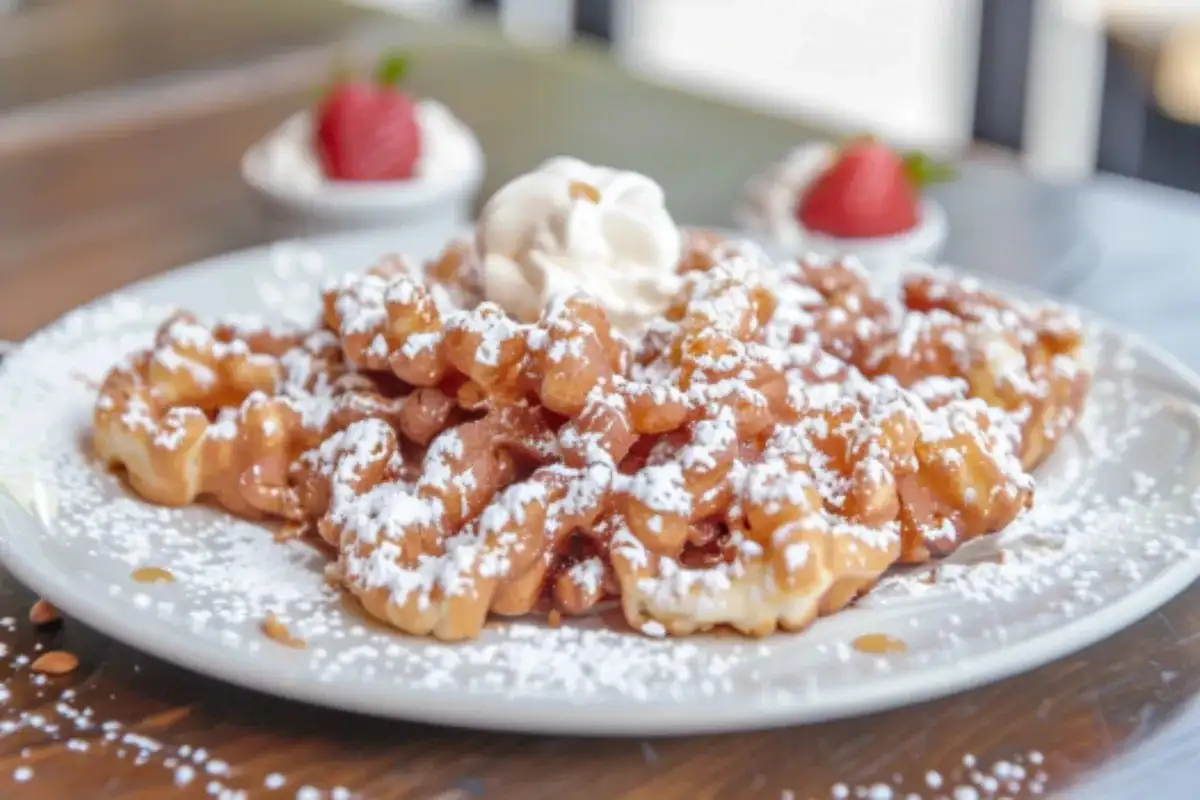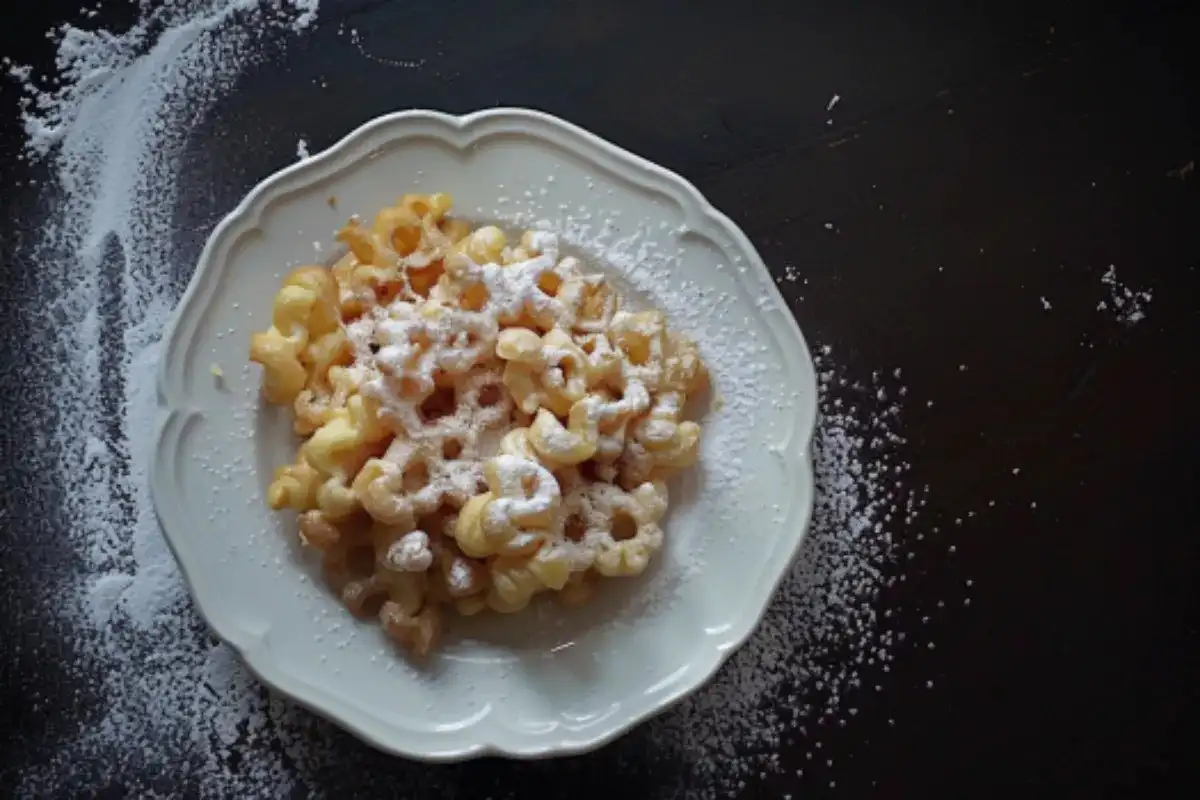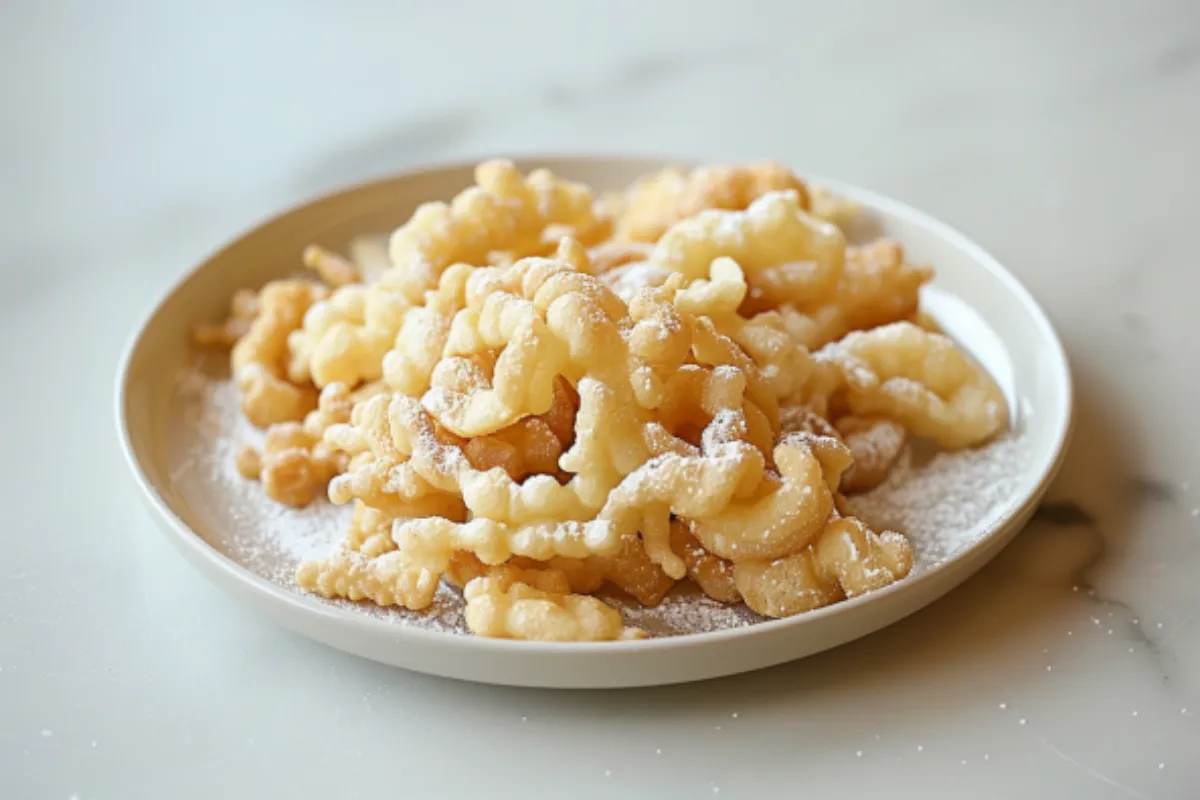Why is Choosing the Right Oil Important?
To achieve the perfect funnel cake, the choice of oil is crucial. The oil’s characteristics influence several aspects of frying, including:
- Crispness: The ideal oil will give your funnel cakes that satisfying crunch while keeping them light and fluffy on the inside.
- Flavor: While funnel cake batter is slightly sweet, the oil can impart a subtle flavor that may complement or compete with the dessert.
- Cooking Efficiency: Different oils heat at varying rates and maintain temperatures differently. Choosing an oil with a high smoke point ensures that the funnel cake cooks evenly and doesn’t become overly greasy.
- Oil Absorption: Some oils are absorbed into the batter more than others, which affects both the taste and texture of the finished product.
In essence, selecting the right oil ensures that your funnel cakes turn out golden, crispy, and delicious without any off-flavors or oily aftertaste.
Characteristics of the Best Oil for Frying Funnel Cakes

Smoke Point of the Best Cooking Oil for Funnel Cakes
The smoke point of an oil is the temperature at which it starts to break down and produce smoke. This is a critical factor when deep frying because once the oil reaches this temperature, it can affect the taste of the food and may even pose health risks. Funnel cakes require oil that can handle temperatures between 350°F and 375°F, so it’s essential to choose an oil with a high enough smoke point to stay stable during frying.
Flavor Profile of the Best Oil for Funnel Cakes
The flavor of the oil is another essential consideration when selecting the best cooking oil for funnel cakes. Since funnel cakes are a dessert, the oil’s flavor should be as neutral as possible. A strong-flavored oil can overpower the delicate sweetness of the funnel cake batter. To help you choose, here’s a comprehensive guide to the best oils for frying.
Reusability of the Top Oils for Funnel Cakes
Another important factor is how well the oil holds up after frying. Reusing frying oil is common in restaurants and at home to save money, but not all oils maintain their quality after being heated. Some oils develop off-flavors or degrade more quickly than others.
Cost and Availability of the Ideal Oil for Funnel Cakes
Finally, the cost and availability of the oil are practical concerns. While peanut or coconut oil may provide unique benefits, they are often more expensive and harder to find than vegetable or canola oil. For those frying funnel cakes in bulk, like at fairs or festivals, the cost of the oil can add up quickly.
Common Oils Used for Frying Funnel Cakes
Let’s explore the most common oils used for frying funnel cakes, highlighting their pros and cons, how they affect the final product, and the best practices for using them.
1. Canola Oil
Canola oil is the go-to oil for many home cooks and professional chefs alike when it comes to the best cooking oil for funnel cakes. It has a smoke point of around 400°F, making it more than capable of handling the high heat required for frying funnel cakes. Its neutral flavor ensures that the sweet and delicate flavor of the funnel cake is the star of the show.
Advantages:
- High smoke point: Canola oil’s smoke point ensures it stays stable at high temperatures, minimizing the risk of burning or imparting unwanted flavors.
- Neutral flavor: One of canola oil’s best features is its lack of flavor. This allows the sweetness of the funnel cake batter to come through without interference.
- Widely available and affordable: Canola oil is one of the most cost-effective and easily accessible oils on the market, making it perfect for home cooks and vendors alike.
Disadvantages:
- Limited reusability: While canola oil is versatile, it doesn’t hold up well after several rounds of frying. It tends to break down faster than other oils, especially after prolonged exposure to high heat.
- Potential for off-flavors: If used multiple times, canola oil can develop off-flavors, which may negatively affect the flavor of your funnel cakes.
2. Peanut Oil
For those looking to add a subtle flavor to their funnel cakes, peanut oil is an excellent option. Known for its high smoke point of around 450°F, peanut oil is often used in professional kitchens for deep frying. Its light, nutty flavor can complement the sweetness of the funnel cake without overwhelming it.
Advantages:
- High smoke point: Peanut oil’s high smoke point makes it perfect for deep frying funnel cakes, ensuring that they cook evenly and quickly.
- Subtle flavor enhancement: While peanut oil does have a light flavor, it’s not overpowering and can add a unique depth to your funnel cakes.
- Good reusability: Peanut oil holds up better than canola oil when reused, making it a good choice for those frying multiple batches.
Disadvantages:
- Cost: Peanut oil tends to be more expensive than other options like vegetable or canola oil, which might not be ideal for those making large quantities of funnel cakes.
- Allergen risk: Peanut oil can be a hazard for those with peanut allergies, so it’s important to be mindful of your audience if you’re cooking for others.
3. Vegetable Oil
Vegetable oil is another widely used oil for frying funnel cakes. It’s a blend of different plant-based oils, usually soybean, corn, or sunflower oil, and has a neutral flavor and a smoke point of around 400°F.
Advantages:
- Neutral flavor: Like canola oil, vegetable oil doesn’t impart any strong flavors, making it perfect for frying sweet treats like funnel cakes.
- Readily available: Vegetable oil is one of the most common oils found in grocery stores, and it’s often sold in large quantities at affordable prices.
- Good frying performance: With a relatively high smoke point and neutral taste, vegetable oil performs well for frying funnel cakes.
Disadvantages:
- Grease retention: One potential drawback of vegetable oil is that it can sometimes leave funnel cakes a bit greasier compared to other oils.
- Breakdown after reuse: Vegetable oil tends to degrade after a few uses, so it’s best to monitor its quality and replace it as needed.
4. Refined Coconut Oil
Refined coconut oil offers a unique alternative for frying funnel cakes and is considered one of the best cooking oils for funnel cakes. Unlike unrefined coconut oil, refined versions have had most of the coconut flavor removed, leaving a more neutral-tasting oil with a high smoke point of around 400°F.
Advantages:
- Stable at high heat: Refined coconut oil has a smoke point that’s well-suited for frying funnel cakes.
- Unique, subtle flavor: Although refined coconut oil doesn’t have a strong flavor, it can still impart a subtle, almost tropical taste that works well with desserts.
- Good frying performance: Coconut oil’s stability at high temperatures means it’s less likely to break down during frying, ensuring consistent results.
Disadvantages:
- Cost: Coconut oil is often more expensive than other oils, making it a less practical option for large-scale frying.
- Availability: While coconut oil is becoming more popular, it may still be harder to find in some areas compared to vegetable or canola oil.
5. Sunflower Oil
Sunflower oil is a lesser-known but excellent option for frying funnel cakes. It’s derived from sunflower seeds and has a smoke point of around 450°F, which makes it perfect for deep frying.
Advantages:
- High smoke point: Sunflower oil’s ability to withstand high temperatures makes it ideal for frying funnel cakes without the risk of burning.
- Neutral flavor: Like canola and vegetable oil, sunflower oil has a neutral flavor that won’t interfere with the sweetness of the funnel cakes.
- Healthier option: Sunflower oil contains more unsaturated fats than other oils, which makes it a slightly healthier choice for frying.
Disadvantages:
- Cost and availability: Sunflower oil may be harder to find and more expensive than more common options like vegetable or canola oil.
The Science of Frying Funnel Cakes

Deep frying is a process that relies heavily on temperature control. As the oil heats up, it forms a protective barrier around the food, preventing it from absorbing too much oil and becoming greasy. When done correctly, frying creates a crispy exterior while maintaining a soft, light interior.
The key to successful frying lies in maintaining the right temperature. If the oil is too cool, the funnel cake batter will absorb too much oil before it has a chance to form a crust, resulting in greasy, heavy funnel cakes. On the other hand, if the oil is too hot, the outside will burn before the inside is fully cooked.
Optimal Frying Temperatures
For funnel cakes, the optimal frying temperature is between 350°F and 375°F, making it crucial to choose the best cooking oil for funnel cakes that can withstand this heat. This range allows the batter to cook evenly without becoming too greasy. It’s important to use a thermometer to monitor the temperature of the oil, as even small fluctuations can affect the outcome of your funnel cakes.
Tips for Maintaining Consistent Oil Temperature
- Use a deep-frying thermometer: This will help you keep an eye on the temperature of the oil and ensure it stays within the ideal range.
- Avoid overcrowding the pan: Frying too many funnel cakes at once can cause the oil’s temperature to drop, leading to uneven cooking. Fry in small batches to maintain consistent heat.
- Allow the oil to reheat between batches: After frying a batch of funnel cakes, give the oil a moment to return to the correct temperature before adding more batter.
Mastering the Art of Frying with the Best Cooking Oil for Funnel Cakes
While frying funnel cakes may seem straightforward, there are a few key techniques that can elevate your frying game and ensure you produce the best possible results.
Use the Right Equipment for Frying Funnel Cakes
The equipment you use can make a significant difference in how your funnel cakes turn out. Here are some essential tools for frying funnel cakes:
- Deep Fryer or Heavy-Duty Pot: A deep fryer with a temperature control feature is ideal for frying funnel cakes. If you don’t have a deep fryer, a heavy-duty pot will work just fine, but make sure it’s deep enough to prevent oil splatters.
- Thermometer: As mentioned earlier, a thermometer is critical for monitoring oil temperature.
- Tongs or a Spider Skimmer: These tools allow you to remove the funnel cakes from the oil safely and drain excess oil.
- Paper Towels: After frying, place the funnel cakes on a plate lined with paper towels to absorb any excess oil.
The Importance of the Best Oil for Frying Funnel Cakes in Achieving Crispness
While the choice of oil is critical, the batter itself plays an equally important role in the final product. The batter should be smooth and free of lumps to ensure even cooking. Here are some tips for making the perfect funnel cake batter:
- Consistency is key: The batter should be thin enough to flow easily through the funnel but thick enough to hold its shape when fried.
- Let the batter rest: Allowing the batter to rest for a few minutes before frying helps the ingredients come together and results in a lighter, fluffier cake.
- Use fresh ingredients: Fresh eggs, flour, and milk will give your funnel cakes the best flavor and texture.
For more tips on making the perfect funnel cake batter, you can check out this guide on homemade funnel cake recipes.
Common Issues When Using the Best Oils for Frying Funnel Cakes
Even with the best oil and batter, things can sometimes go wrong. Here are some common issues that arise when frying funnel cakes and how to fix them:
Soggy Funnel Cakes
Problem: Your funnel cakes are turning out soggy rather than crispy. Solution: This is usually a result of frying at too low of a temperature. Make sure your oil is between 350°F and 375°F and that the cakes are frying for the appropriate amount of time. If the temperature is correct, consider adjusting your batter. Too much liquid in the batter can also lead to soggy results.
Burnt Funnel Cakes
Problem: The outside of your funnel cakes is burnt while the inside remains undercooked. Solution: This is a sign that the oil is too hot. Lower the temperature of the oil and monitor it with a thermometer to ensure it stays within the ideal range. You can also try frying smaller funnel cakes to help them cook more evenly.
Greasy Funnel Cakes
Problem: Your funnel cakes are overly greasy. Solution: Greasy funnel cakes are often the result of frying at too low a temperature. The batter absorbs more oil when the oil isn’t hot enough to form a crispy outer layer. Make sure your oil is hot enough before adding the batter.
For more tips on troubleshooting common funnel cake issues, check out this funnel cake recipe guide.
The History and Cultural Significance of Funnel Cakes

Funnel cakes have a long and storied history that dates back to medieval Europe. They are thought to have originated in Germany, where a similar dessert known as ‘drechterkuche’ was made by pouring batter through a funnel into hot oil. German immigrants brought the recipe to America in the 17th and 18th centuries, where it became a popular treat at fairs and festivals, especially when made with the best cooking oil for funnel cakes.
Today, funnel cakes are a staple at carnivals, amusement parks, and outdoor events across the United States. They are typically served with powdered sugar, but many variations exist, including versions topped with fruit, chocolate, and whipped cream. The simplicity of the recipe combined with its versatility has made funnel cakes a beloved dessert for generations.
Frequently Asked Questions
1. What is the best oil to fry funnel cakes?
- The best oil for frying funnel cakes is one with a high smoke point and neutral flavor. Popular options include canola oil, vegetable oil, and peanut oil. Each provides a stable frying environment and won’t overpower the flavor of the funnel cakes.
2. Why are my funnel cakes greasy?
- Greasy funnel cakes are typically the result of frying at too low of a temperature. Ensure the oil is between 350°F and 375°F when frying. If the oil is not hot enough, the batter absorbs more oil, leading to greasy cakes.
3. Can I reuse frying oil for funnel cakes?
- Yes, you can reuse frying oil, but it’s important to strain it to remove any leftover batter or crumbs. Be mindful of the oil’s quality discard it if it becomes dark, has a burnt smell, or develops an off-flavor.
4. Can I use olive oil to fry funnel cakes?
- Olive oil is not ideal for frying funnel cakes because it has a low smoke point and a strong flavor that can overwhelm the sweetness of the cakes. Stick to oils like canola, vegetable, or peanut for better results.
5. How do I prevent funnel cakes from burning?
- To prevent funnel cakes from burning, maintain an oil temperature of 350°F to 375°F. Fry them in small batches and avoid overcrowding the pan. Use a thermometer to monitor the oil’s temperature and adjust the heat as needed.
Conclusion
Frying funnel cakes to perfection requires careful attention to detail, particularly when it comes to choosing the best cooking oil. From canola oil and peanut oil to vegetable oil and refined coconut oil, each option offers unique advantages and disadvantages. By considering factors such as smoke point, flavor, reusability, and cost, you can select the ideal oil to create crispy, golden funnel cakes every time. With the right tools, techniques, and a bit of practice, you’ll be able to master the art of funnel cake frying and enjoy this iconic treat in the comfort of your own home.
For additional resources, including tips on making funnel cake batter and troubleshooting common issues, check out this comprehensive funnel cake recipe guide.

